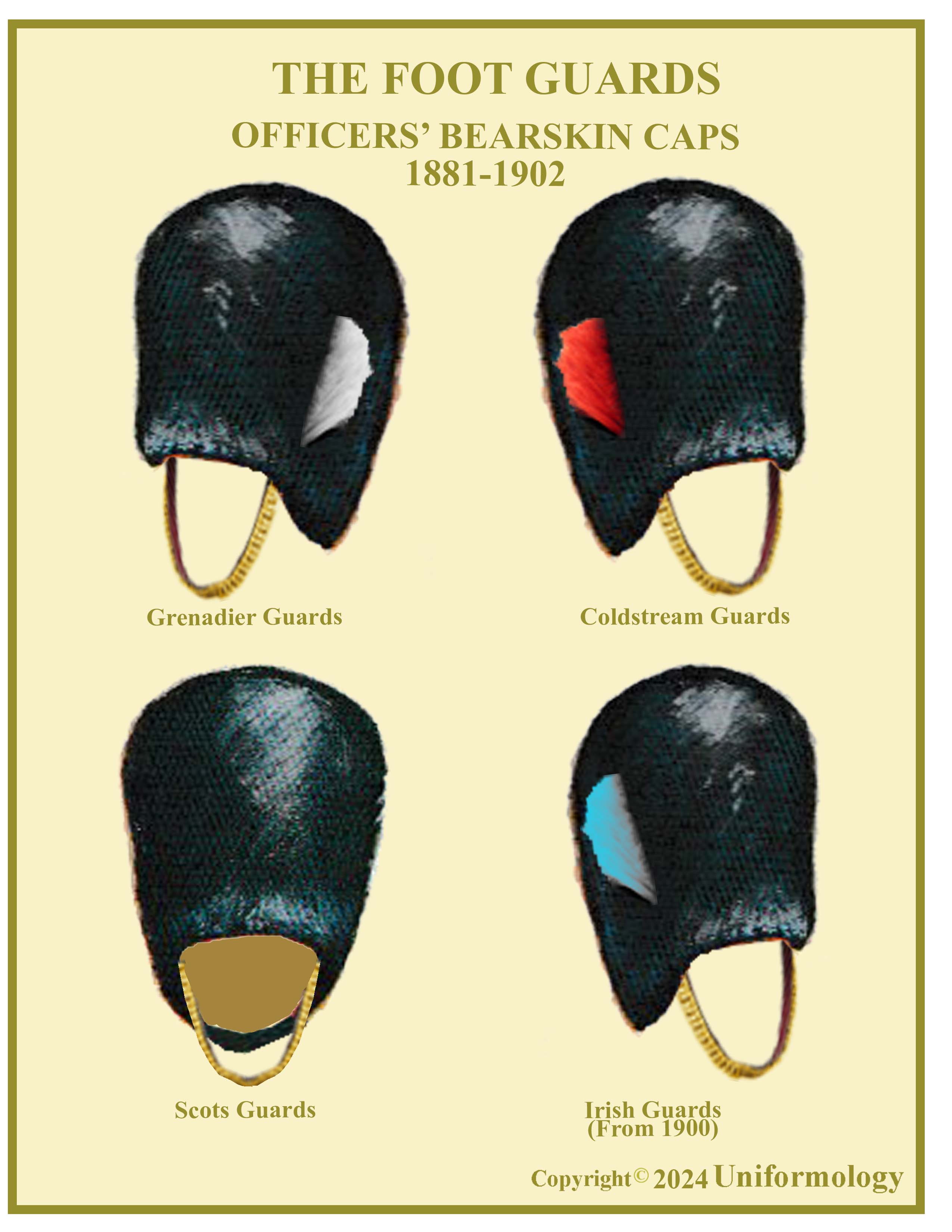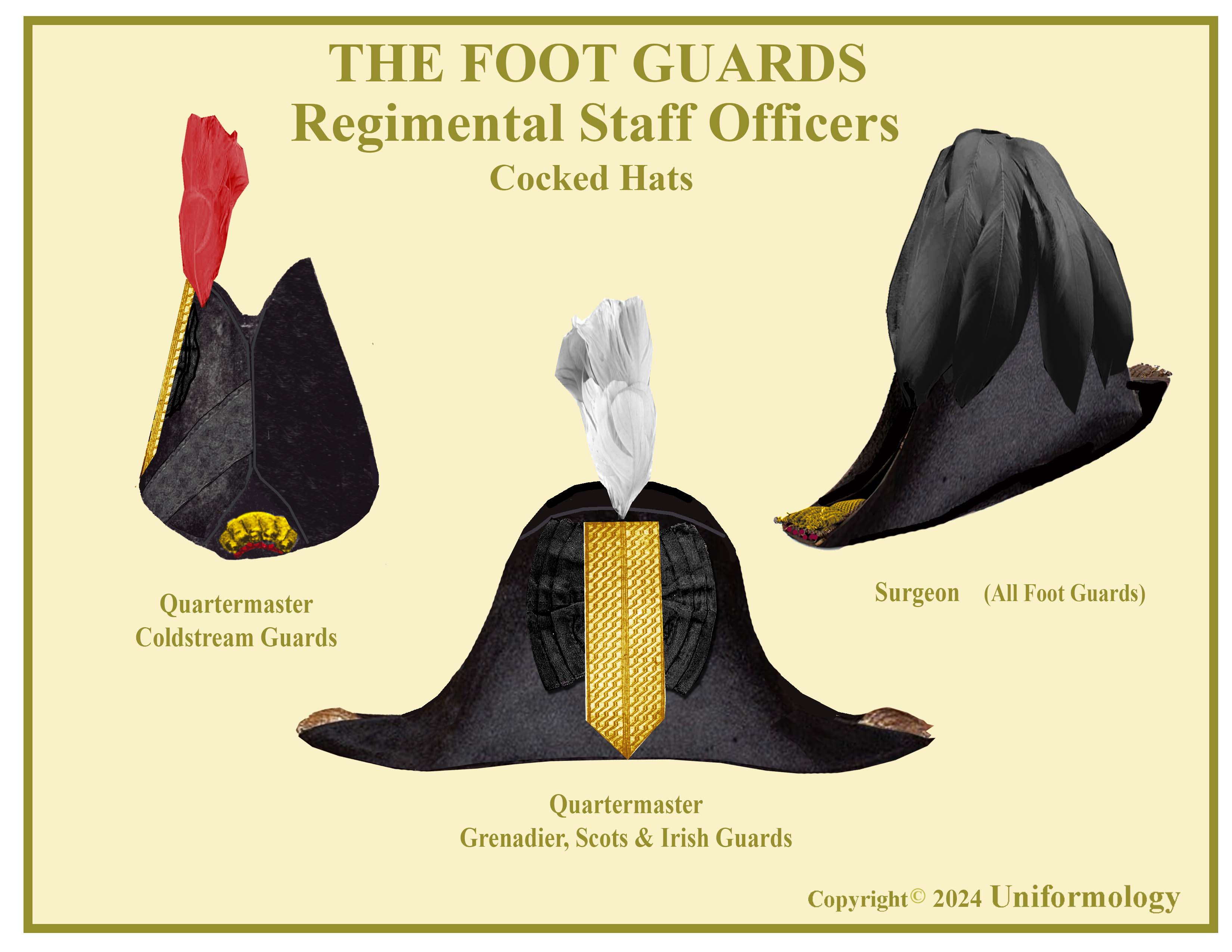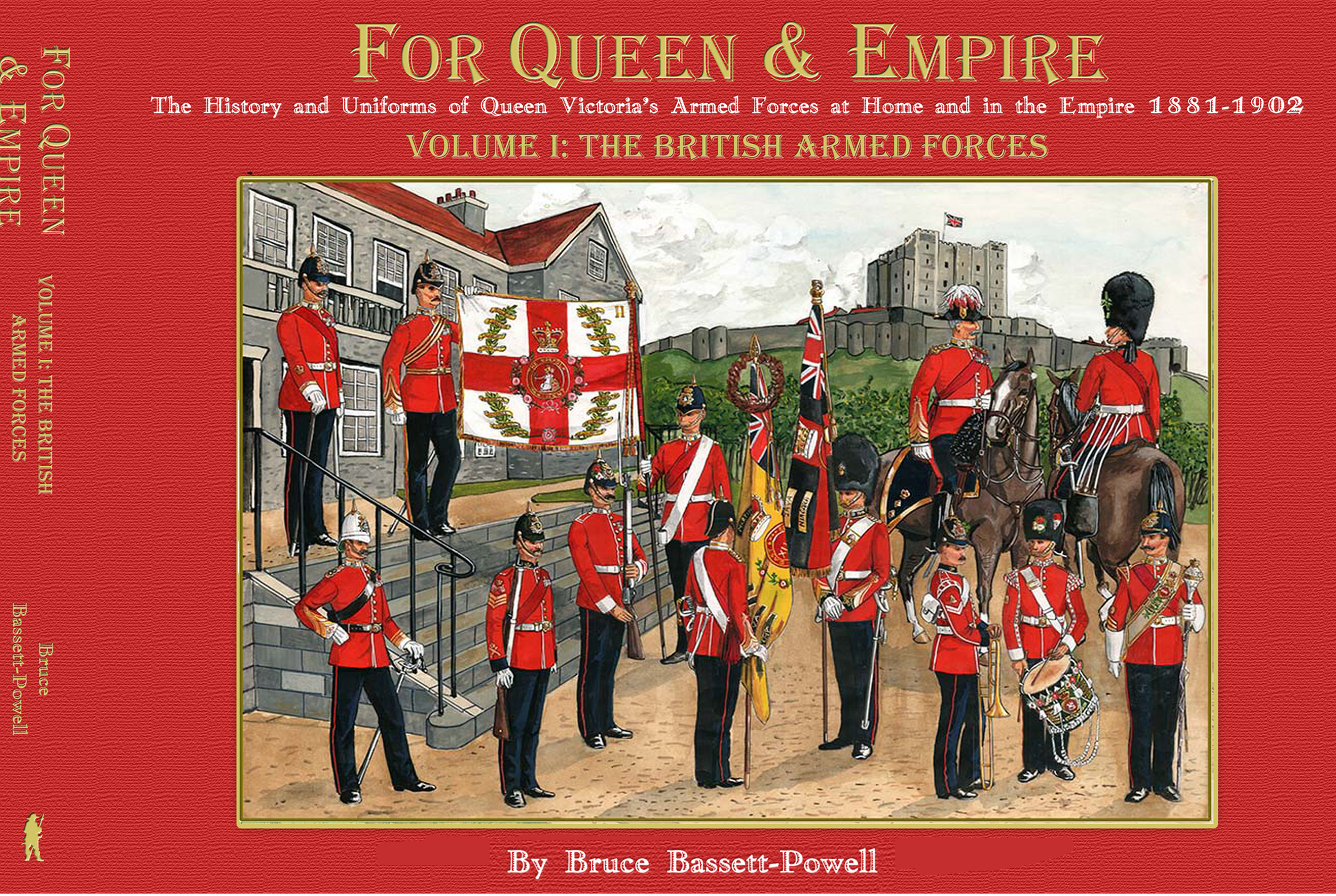UNIFORMS, ARMS & EQUIPMENT - FOOT GUARDS
THE FOOT GUARDS 1881-1902
FULL DRESS HEADDRESS
The Grenadier Guards
1656-1660 His Majesties Regiment of Guards (Wentworth's Regiment)
1660-1685 The King's Royal Regiment of Guards
1685-1815 The First Foot Guards
1815 The 1st (Grenadier) Regiment of Foot Guards
The Coldstream Guards
1650-1660 Monck's Regiment of Foot
1660-1661 The Lord General's Regiment of Foot.
1660-1670 The Lord General's Regiment of Foot Guards
1670-1817 The 2nd (Coldstream) Regiment of Foot Guards
1831 The Coldstream Guards
The Scots Guards
1642-1661 Argyll's Regiment
1661-1686 The Scottish Foot Guards
1686-1713 The Scotch Guards
1713-1831 The3rd Foot Guards
1831-1877 The Scots Fusilier Guards
1877 The Scots Guards
The Irish Guards
Raised in 1900
The Dress regulations determined that the height of the black bearskin cap should be between 8 1/2 to 10 inches depending on the height of the wearer. In fact, officers wore caps much taller than that indicated in dress regulations.
The Grenadiers had a white Goat's Hair plume 6 inches high on the left side
The Coldstream had a scarlet feather on the right, while the Scots Guards had none.
The Irish Guard's adopted a St. Patrick's Blue feather on the right when formed.
The Regimental Staff officers wore cocked hats
The Surgeons on the medical staff of all Guards regiments had black drooping cocks feathers six inches long
Quartermasters of the Grenadiers and Scots had a white swan's feather 5 inches high
Those of the Coldstream Guards had a scarlet feather
NEXT:
Uniforms and tunic embellishments





